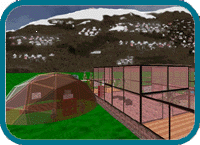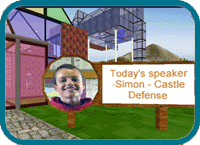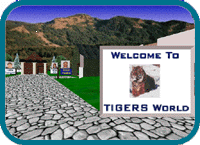|
 |
Haags
Montessori Lyceum
EDUHML in AWedu
EDUHML is a project of the Haags Montessori Lyceum, whose main aim is to
develop an enriched learning environment. Students throughout our Lyceum
play the main role in this development. We ask them to make proposals to
make this environment, this world a challenging - a creative and an effective
one. We ask them to design and to build this world, both the 3D part and
the educational content. At this moment the following developments are taking
place a group of our students is collaborating with students from Italy
in a project monitored by the university of Nijmegen. Main research goal
of this project is to design and implement an educational Virtual Reality
environment that fosters collaborative learning at a distance and enables
students from schools apart to work together, collaborate, and communicate.
It is assumed that Active Worlds translated into practice collaborative
and constructive learning principals by allowing students to design and
build virtual objects by themselves collaborating to other kids located
at a distance under the adults supervisions. a group of students is going
to take part in netd@ys project called WindMills "WindMills" a Netd@ys project
aims to enlighten the circumstances and beliefs people had a millennium
ago (around year 1000) and how they have changed in the course of time.
As a metaphor of this project is a medieval virtual town which will relate
to modern times, presenting scenes from medieval buildings still intact
in the main partner towns. In addition to texts and pictures, there will
be 3D-panoramas and medieval music to make the students experience more
vivid and tangible.
Contact:
Piet Heyboer
piet.heyboer@knoware.nl |
 |
|
 |
Katholieke Universiteit
Nijmegen, Department of Educational Sciences, Netherlands
Euroland in AWedu
Euroland is a research project to create and use an educational Virtual
Reality environment that fosters collaborative learning at a distance
and enables students from schools apart to work together, collaborate,
and communicate. It is assumed that Active Worlds translated into practice
collaborative and constructive learning principals by allowing students
to design and build virtual objects by themselves collaborating to other
kids located at a distance under the adults supervisions. Theoretical
background used are:
- the "community
of learners" model (Brown & Campione 1994) and in particular the notion
of distributed cognition and the constructionism as defined by Papert
(1991).
- the communication
theory applied to the mediation of computer software (Clark & Brennan,
1991).
- develop specific
communication skills based on technology literacy, iconic and written
communication;
- overcome, at least
partially, differences in culture, gender, and social status, since
the communication can be anonymous and users' physical features are
not visible;
- improve their
motivation as well as their collaborative and metacognitive skills;
- learn in a less
traditional setting the content of an original task, designed just for
this project.
Contact:
Beatrice Ligorio
b.ligorio@ped.kun.nl
Dott. Francesco Leonetti fleonet@iqsnet.it
http://www.garamond.it/euroland/
|
 |
|
 |
San Diego County
Office of Education and Imperial County Office of Education, California;
Borderlink Project
LinkWrld in AWedu
Funded through a U.S. Department of Education Technology Innovation Challenge
Grant, the BorderLink Project is a unique collaboration between the Imperial
County Office of Education and the San Diego County Office of Education.
The project's goals are to:1) increase
the number of students who qualify for college; 2) prepare students to
select a university and provide skills to succeed in college; 3) design,
implement and disseminate effective professional development to support
student learning outcomes;
provide equitable access to technology; and 4) involve parents, partners
and community members in effective partnerships. The five-year project
will provide Advanced Placement and honors courses to high school students
through the Internet and videoconferencing. Support will be provided through
counseling services, tutoring, mentoring, and test-taking skills. Students
will be offered a training program that prepares them to find employment
as network administrators. The entire project is founded on a comprehensive
program of professional development that will engage teachers, administrators,
counselors, board members, and technical support personnel. All elements
of the BorderLink Project will reside in a three-dimensional virtual world
to be called LinkWorld that will serve as a reservoir of resources and
portal to all project activities.
Contact:
Carol Kerney
ckerney@sdcoe.k12.ca.us
http://www.borderlink.org/
|
 |
|
 |
Hogskolen I Bergen
Norway - Bergen College
CYBERGEN in AWedu
CyBergen will be a world for the study of virtual learning activities
for children in the age of 6 to 15. It will be a platform for experiments
about teaching children by the use of virtual tools and to observe how
the children use this kind of communication with each other's. Mediesenteret,
located in Bergen, Norway creates CyBergen. Mediesenteret is a department
at Bergen College where we work in close connection to the teacher-training
department. Mediesenteret produce Internet solutions and CD-ROM's and
educate students in the use of multimedia tools. In CyBergen our aims
are to create building elements and frameworks, for schools in the city
of Bergen. Teachers and pupils will then continue to construct the buildings
and create different learning activities. So far, we have planned an area
for pupils in the age 7 to 15 years and another area for small children,
aged 4 to 6. We will also use CyBergen for international projects we are
involved in. One of the projects is between two schools in Bergen, two
in London and two in Groningen, Netherlands and we will see how children
from different countries can use Educational Universe in their communication.
There will be some problems with the language, but perhaps the "body language"
in Educational Universe activities can compensate this.
Contact:
Henning Klafstad
hkla@hib.no
|
 |
|
 |
Wellington College
of Education, Distance Teacher Education
KURA in AWedu
Kura is a project based in Aotearoa - New Zealand. The name comes from
our indigenous Maori language and it means "school". Kura is being used
to: 1) Trial ideas and methods for using 3D worlds for teaching and learning
2) Research and develop a future scenario model for the Internet delivery
of distance education to students aged 9-13 years. 3) Work with students
in local schools, promoting collaborative projects that use Kura as a
unifying communication tool. There are some particular features:
- Evaluation of the
world as a vehicle to promote collaborative projects between students
attending school traditionally. Kura will be the main technology, backed
up with email, file transfer, downloadable Real Media, Pure Voice Audio
attachments, audio conferencing software.
- Thinking skills
Evaluating the possibility that of on-line thinking skills activities
will enhance students handling of ideas and information. brainstorming
De Bono's six thinking hats Group concept mapping
- Audio communication
running with the 3D World Use of multicast audio conferencing Implications:
Preservation of modem level bandwidth Students presenting orally and
participating in discussions and lessons using several modes of communication-
but audio being a major mode of communication.
- Embedding the New
Zealand curriculum, essential skills and processes. Embedding the content
but also looking at new ways in which students will interact with it.
Contact:
Bruce Carey
bruce.carey@wce.ac.nz
|
|
|
 |
West Virginia University,
College of Engineering and Mineral Resources
TIGERS in AWedu
TIGERS (Teams of Interdisciplinary Graduate Fellows Engaged to Reinvigorate
Students) is a three-year National Science Foundation project that combines
the talents of outstanding graduate students in science, mathematics,
engineering, and technology as well as teacher-leaders for middle grades
in mathematics and science. TIGERS represents a collaborative effort between
the Colleges of Engineering and Mineral Resources, Arts and Sciences,
Human Resources and Education at WVU. Because the state science (and eventually
mathematics) curriculum is organized in an interdisciplinary thematic
fashion TIGERS fellows are organized into interdisciplinary "theme teams"
that provide mathematics and science teachers in participating schools
the most up-to-date content knowledge while expanding their teaching capabilities.
Teams of TIGERS fellows will visit the schools, co-plan and co-teach with
mathematics and science teachers, and invite the teachers and their students
to engage in engineering and science research beyond the normal curriculum.
This sustained contact requires a more interactive environment, and this
is precisely where Active Worlds comes in. This world would complement
the existing virtual high school efforts already a part of the education
universe. Margaret Corbit of Cornell University will provide guidance
on the construction and maintenance of a TIGERS world, as well as to provide
critical input on the operation of the world.
Contact:
Allen C. Cogley
acogley@wvu.edu
Eric J. Pyle
epyle@wvu.edu
|
|
|

